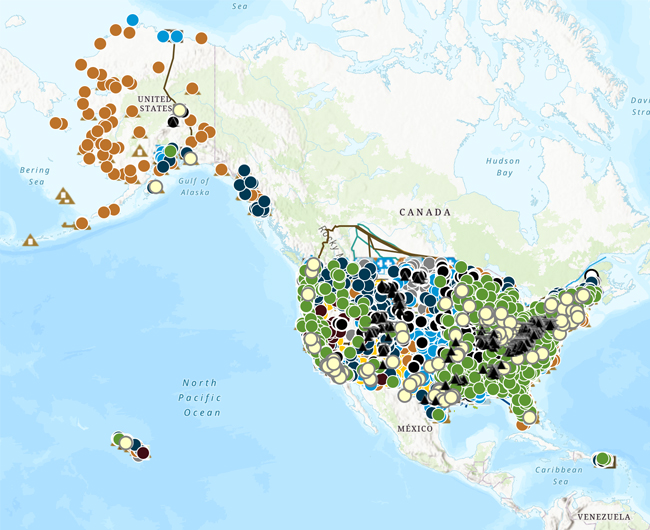Profile Overview
U.S Energy Atlas with total energy layers
 View the interactive map
View the interactive map Quick Facts
- By capacity, the Grand Coulee Dam on Washington's Columbia River is the largest power plant in the United States and the ninth-largest hydroelectric power plant in the world. In 2023, it supplied about 15.6 million megawatthours of electricity to 8 western states and parts of Canada.
- Washington generated more electricity from hydropower than any other state and accounted for 25% of the nation's total utility-scale hydroelectric generation in 2023.
- Washington has the fifth-largest crude oil refining capacity in the nation and can process a combined total of almost 650,000 barrels of crude oil per day at the state's 5 refineries.
- In 2021, Washington consumed less natural gas than about half of the states and, by volume, less per capita than all but four other states and the District of Columbia. The largest share of the state's natural gas comes from Canada, either directly or through the state of Idaho.
- Washington is part of the West Coast Electric Highway, and more than 90,200 battery electric vehicles are registered in the state, the fourth-most in the nation. As of February 2024, Washington had more than 2,150 electric vehicle charging locations and more than 5,950 charging ports.
Last Updated: April 18, 2024
